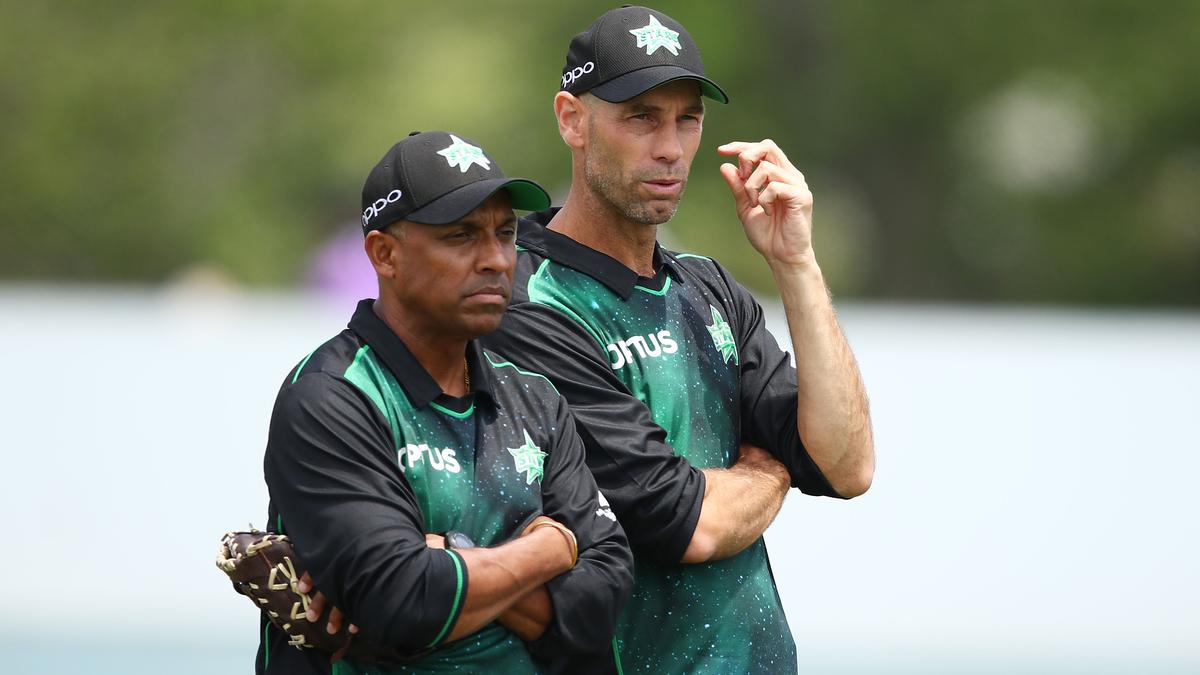‘Never aware of the camera’: raw reaction to Ashes drama laid bare in cricket doco | Angus Fontaine

- by Admin
- May 23, 2024

The art of immersion calls for a fine balance. For the documentary team behind the third season of The Test, following Australia’s cricketers on the 2023 tour of England, it meant being invisible yet at the same time everywhere a big moment was breaking. Zooming in as Nathan Lyon sobs into his towel, hovering quietly as captain Pat Cummins weathers an angry mob calling him a cheat, and refusing to duck for cover when David Warner starts hurling bats and bottles.
“Really, it’s one guy in a corner who has hidden microphones around,” says Cummins. “On screen it feels bigger than in the moment, but it’s totally fly-on-the-wall – we’re never aware of the camera.”
So when Alex Carey unleashes hell by throwing down Jonny Bairstow’s stumps on day five of the Lord’s Test, lone cameraman Clancy Sinnamon is in the dressing room as the Australians return from being abused by MCC members in the once-austere Long Room and start riding the emotional storm of their actions.
“It’s an incredible moment,” says co-director Sheldon Wynne, “and part of me wanted seven cameras in that situation. But the beauty and intimacy of The Test is based on us being a low-fi operation and we never want to lose the team’s trust. So instead of trying to be everywhere at once we stay in that tiny room to see the players joking, processing it. And we see Pat’s calm captaincy and the cohesion of this team in showing instant solidarity on the strategy. But viewers will know this is much bigger than the team realises.”
The Test reveals the heavy toll the Lord’s stumping took on Carey and reveals it was Cummins who ordered the hit. Does he wish he’d taken ownership sooner? “The funny thing is, I thought I did,” the captain says. “Seeing that said now has caught me off guard. Yeah, maybe I would’ve taken some more of the heat. But we were pretty clear from the outset that a few of us had seen something. Yes, it was Alex who threw the ball but that was a team wicket.”
When series one of The Test debuted back in 2020, it was the key cog in a Cricket Australia-driven public image overhaul after the sandpaper scandal had reduced the team’s reputation to rubble. Series two had more scandal: sexting reports that cost Tim Paine the team captaincy and the resignation of The Test’s central figure, coach Justin Langer. A new hero rose in Cummins, a captain with a conscience who is determined to win back hearts and minds.
“That cataclysmic moment [in South Africa] reshaped the way these players saw their role within Australian cricket,” says co-director Adrian Brown. “Series three closes the loop on that rebuild process and follows the quest to win the Ashes outright. That’s the unfinished business for this team.” Before they get to it, The Test shows us the World Test Championship against India. It finds Cummins returning to the side after his mother’s death and honeymooner Travis Head picking up his first bat in two months.
This is where The Test is so powerful. Raw interviews about these personal odysseys supercharge the epic performances that follow. The series has full tear-jerker moments: Nathan Lyon limping out to bat with a torn calf as a final act of defiance to the old enemy, Mitch Marsh’s recall at Headingley after four years out of the side, Cummins’ hug with his father after piloting victory in the first Test.
“It was emotional to relive,” says Cummins. “The first Test of an Ashes is so big as it is, but to have Dad there after the Lord’s win after what we’d been through in the lead up, felt like the climax of so many things coming together. It’s special to have it on film.” Tougher for Cummins was re-living Australia’s unravelling in the final Test on the verge of a 3-1 victory. “That was the hardest to watch. We’re so close but it slips by. To see us not at our best is tough.”
Yet the failures, struggles and human frailties endear the deepest. None more than the story of Marsh, a prodigious talent pilloried by fans and media, whose moment arrives in the third Test, walking out 85-4 and thundering a 102-ball century, the fastest by an Australian in England since Victor Trumper’s 95-ball ton in 1902. Given father Geoff and brother Shaun were Test players, Marsh grew up in the sanctity of the private places The Test takes us.
after newsletter promotion
“But there’s no way you’d have been able to film this in Dad’s day with all the beer and cigarette sponsorship,” Marsh laughs. “Now it’s our responsibility to give back to the game. The Test helps us do it. Australia’s cricket team has always been a closely guarded secret known only to the baggy green fraternity. For people to see how heavy Lords was, understand what we went through – it’s special.”
Cummins agrees. “The reason we’re doing this is the fans. We were kids once looking up to the Aussie team, wishing we could see behind the curtain. Letting them in feels like the right thing to do.”
The Latest News
-
November 15, 2024Nick Kyrgios set to make long-awaited return to tennis as comeback date revealed
-
November 15, 2024List wins elusive DP World Tour card, Barron loses his
-
November 15, 2024India great warns ‘the king is back in his territory’ as struggling Virat Kohli returns for fifth tour
-
November 15, 2024‘Adaptable’ Murphy spins out WA to put Vics in control | cricket.com.au
-
November 15, 2024Nick Kyrgios: Australian tennis star confirms return to ATP Tour at Brisbane International in December




